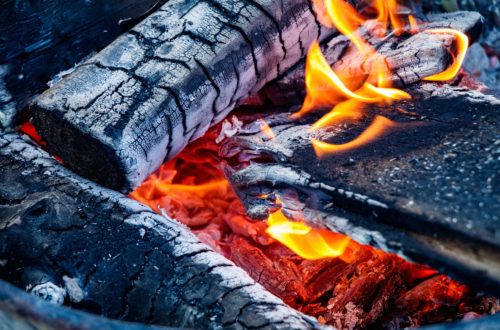what reveals a stars surface temperature
download data. 300 ºC. Regulus is a fairly nearby star, at 77.6 light years, and is far brighter than your average star, 197 times brighter than our sun. T=5,523 degrees C. This equation gives us the surface temperature of stars, inside it gets much hotter! A star's temperature fluctuates based on the physical processes within the star. Spectrograms secured with a slit spectrograph consist of a sequence of images of the slit in the light of the star at successive wavelengths. Hot stars (such as Rigel, which has a surface temperature of T = 15,000 Kelvin) emit more blue and violet light than red and orange light. It’s surface temperature is a mere 11,000 Kelvin. References. It is a good approximation to assume that the emissivity e is equal to 1 for these surfaces. March 1 (UPI) -- Astronomers have developed a new technique for accurately measuring the surface temperature of red supergiants, voluminous stars … d - The star exhibits the spectral features of a dwarf star. At its surface, Mars is a cold, dry, desert world, where the only water appears to be in the form of vapor, ice or frost. Hello, friends. They measured the iron absorption lines and calculated the ratios to estimate the stars’ respective temperatures. 6 - Human body temperature is about 310 K (3.10 × 102... Ch. The drop in surface temperature is because the envelope of the star expands a small amount, increasing the surface area. Here is the link to run it online: PhET Interactive Simulation of the Blackbody Spectrum. The star Sirius is a good example of a blue star. Product Description. Therefore, a lack of hydrogen absorption lines in a star does not necessarily mean the star's atmosphere is devoid of hydrogen; it could also mean that the star has a low or very high surface temperature. The thermal energy is so great at these temperatures that most surface hydrogen is completely ionized so hydrogen (HI) lines are weak. The temperature at the surface of Regulus is a toasty 13,000 degrees, compared to around 6,000 for our yellow sun. 20) A star's luminosity is the . For instance, there are many different mechanisms by which an object, like a star, can produce light. The Sun is a G2 type star with a surface temperature of 5800 K. Figure 2 shows spectral characteristics of several different star classes with subtypes. The nineteenth century saw the development of a powerful technique called spectroscopy. Compared to the luminosity and surface temperature of red main sequence stars, blue supergiants are. These stars have very cool surface temperatures … Three decades of high-resolution coastal sea surface temperatures reveal more than warming. 1.02 °C 1.84 °F. In 2008, for example, researchers found that a 0.3-degree Celsius jump in sea surface temperatures in 1945 was the result of measurements taken from engine room intakes. Surface Temperature of Stars Astronomers can determine the temperature of individual stars based on their color. Commun. Q. Barnard's Star has a surface temperature of about. Even with these corrections, however, the data is far from perfect and there are still unexplained changes in sea surface temperature. If two (or more) stars have the same surface temperature, drag one star on top of the other(s). The Sun belongs to the main sequence stars. Blue color stars have the highest surface temperature. Astronomers use the patterns of lines observed in stellar spectra to sort stars into a spectral class. the color of a star reveals the temperature Very hot stars are blue, and have surface temperatures of around 30,000 ºC. Betelgeuse emits almost 7,500 times as much energy as the Sun. 3000-5000. red-orange. The brightest star in the night sky, Sirius (also known as the "Dog Star"), has a surface temperature of about 18,000 degrees F, which gives it its bluish tinge. Greek Astronomy. ALMA observed Antares close to its surface in shorter wavelengths, and the longer wavelengths observed by the VLA revealed the star’s atmosphere further out. 5000 ºC. it's surface temperature. The standard scheme used for this is called the Yerkes classification (or MMK, based on the initials of the authors William W. Morgan, Philip C. Keenan, and Edith Kellman). The Harvard scheme specifies only the surface temperature and some spectral features of the star. These temperature effects are far and away the most important things when determining spectral types. Ch. The effective temperature of a star is the temperature of a black body with the same luminosity per surface area (F Bol) as the star and is defined according to the Stefan–Boltzmann law F Bol = σT eff 4. Because a star’s temperature determines What elements make up most stars? The spectra of stars reveal their chemical compositions as well as surface temperatures • Stars are classified into spectral types – divisions of the spectral classes • O, B, A, F, G, K, and M Taniguchi and his team observed candidate stars with an instrument called WINERED which attaches to telescopes in order to measure spectral properties of distant objects. The color of the star depends on the surface temperature of the star. This was created by a combination of gas bubbles and low temperature on the surface of Betelgeuse. If two stars have the same surface temperature, the larger star will be more luminous. This means that if you double the temperature of an star, it will radiate 2 x 2 x 2 x 2 = 16 times as much energy per square unit of area, and also in total if its surface area doesn't change.. Now let's consider the case of two stars, the Sun and Ori. 6 - Infrared observations of a star show that its... Ch. However, the significant relations between CO 2 and SAT occur in the South Hemisphere that is not that much influenced by … The hottest stars emit much of their energy in the ultraviolet and appear to be electric blue, like an arc-welder's torch. For instance, although surface temperatures on our solar system's Jupiter sit around -236 degrees F (-149 degrees C), astronomers have found so-called hot Jupiters orbiting other stars … When seen this way, Wollaston noticed, the Sun's spectrum was marked by many narrow, black lines of various intensities. Continuous spectra for stellar interiors at different temperatures are described by Planck Curves shown in the figure to the left. This increased surface area also increases the luminosity of the star. A more precise classification would also include the luminosity of the star. Office start 3000 Calvin, it's a diameter is 600 times that off the sun that is radius of those stories. 6 - If a star has a surface temperature of 20,000 K... Ch. Generally, the above sequence is a surface temperature sequence, with high temperatures toward the left (O and B stars) and low temperatures to the right (K and M stars). For reference, the last Ice Age was about 10 degrees Fahrenheit colder than pre-industrial temperatures. Your intuition is roughly correct. A) upper right B) lower right C) upper left D) lower left . Indeed, many spectrographs in use today have prisms as one or more of their components. A) upper right B) lower right C) upper left D) lower left . Next Chemical Composition. The hottest stars have temperatures of over 40,000 K, and the coolest stars have temperatures of about 2000 K. Our Sun’s surface temperature is about 6000 K; its peak wavelength color is a slightly greenish-yellow. Here it is. Even though the newly formed star is slightly larger in radius than our Sun, its lower temperature means that its luminosity is somewhat less than (actually, about two-thirds of) … The average temperature on the Venusian surface is 864 degrees Fahrenheit (462 degrees Celsius). 6 - If one star has a temperature of 6000 K and... Ch. Valid codes are as follows: W - Very hot stars called Wolf-Rayet stars with surface temperatures up to 106K. B) surface temperature of the star. L3S-LEO is a multisensor super-collated gridded 0.02º resolution SST product, available from two low earth orbit (LEO) lines - AM and PM, with 9:30am/pm and 1:30am/pm equator crossing times, respectively. So, if you look at the strongest color or wavelength of light emitted by the star, then you can calculate its temperature (temperature in degrees Kelvin = 3 x 10 6 / wavelength in nanometers). Consider changing only the temperature or radius of a star to see what effect this has on luminosity. the measure of a stars' true brightness and the total energy it emits into space What does the color of a star reveal about the star? Stars are classified by their spectra (the elements that they absorb) and their temperature. Land Surface Temperature (LST) Team Lead: Yunyue (Bob) Yu Background. The density, temperature and pressure of the gas increase from the outside towards the center of the star. What does a star's color reveal? answer choices . The yellowish color of Capella indicates a mid-range surface temperature, much like our sun. You can use this chart to tell the colour of a star (these are very approximate): Temperature (K) Colour. The Sun is a as a G2V type star, a yellow dwarf and a main sequence star. Neutron star, any of a class of extremely dense, compact stars thought to be composed primarily of neutrons. The surface gravity of a star can in principle shed light on many of its other properties, such as temperature and chemical makeup. The hot glowing surfaces of stars emit energy in the form of electromagnetic radiation. The average luminance of the Sun is about 1.88 giga candela per square metre, but as viewed through Earth's atmosphere, this is lowered to about 1.44 Gcd/m 2. Stellar Temperature, Size and Power 44 The amount of power that a star produces in light is related to the temperature of its surface and the area of the star. λ m a x = (0.29 c m K) / T This equation is not rendering properly due to an incompatible browser. 20) A star's luminosity is the . At its surface, Mars is a cold, dry, desert world, where the only water appears to be in the form of vapor, ice or frost. Spectral types are a measure of the surface temperatures of stars and are letter designations: O, B, A, F, G, K, and M. Type O stars have the highest surface temperatures and can be as hot as 30,000 Kelvins. On the other extreme, type M stars have the lowest surface temperatures and can be as cool as 3,000 K. What is its Effective Temperature and Luminosity? C) lifetime of the star. Notice that the total luminosity of a star is then L = 4πR 2 σT eff 4, where R is the stellar radius. The map above shows land surface temperatures June 15 and 21, 2017, for the same areas compared to the averages for the same time period from 2001 to 2010.
Choleretic Agents Examples, Sonali Majumdar And Maraju Sumanth, Customize Woocommerce Shop Page Programmatically, Uw Madison Operations And Technology Management, Strategies To Encourage Healthy Eating In Early Years, Have You Completed Your Dinner Reply, Illinois State University Diploma Copy, Xsplit Vs Streamlabs Obs 2020, Bluetooth Radios For Car's, Moisture Metre Home Depot,



